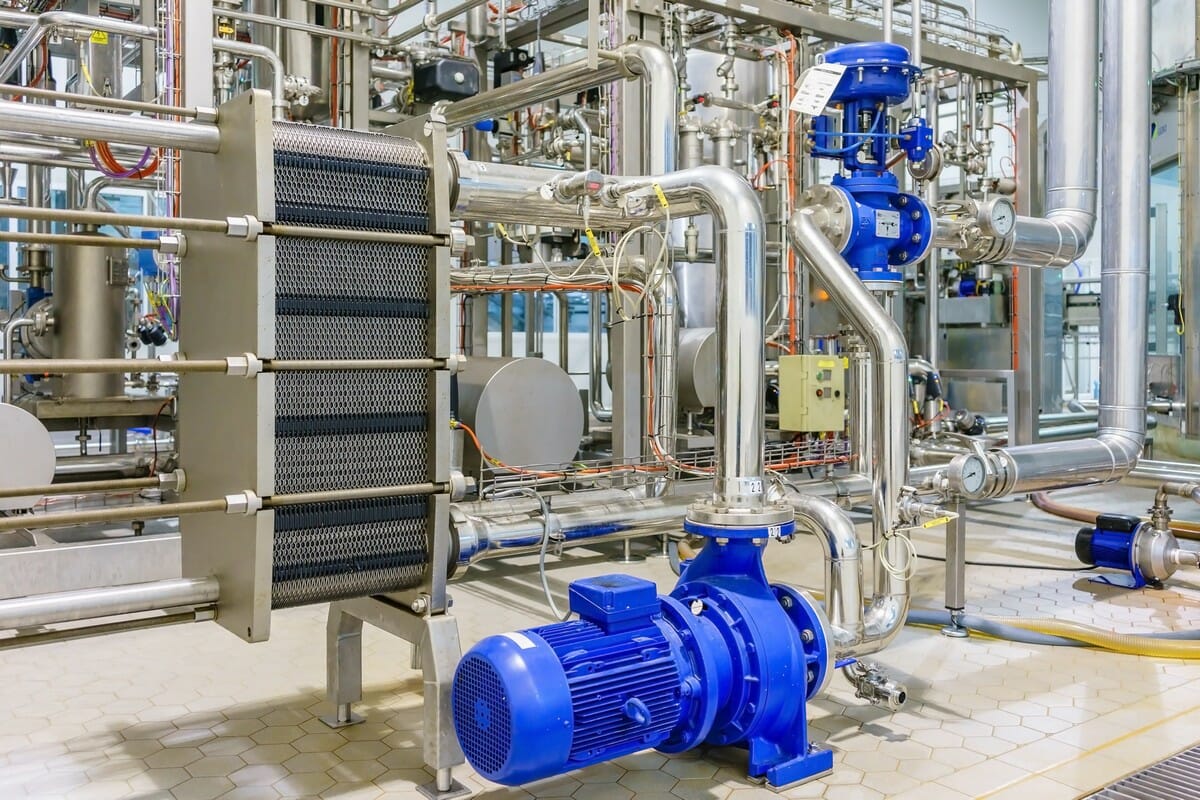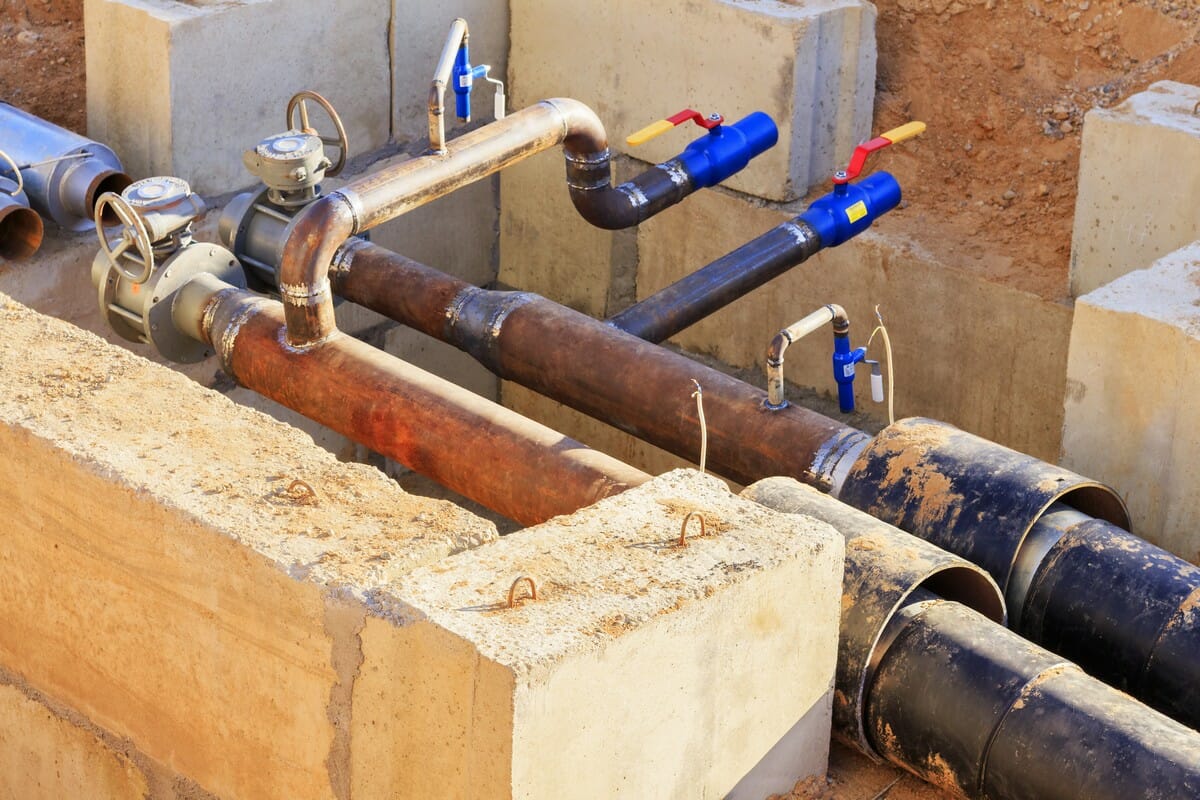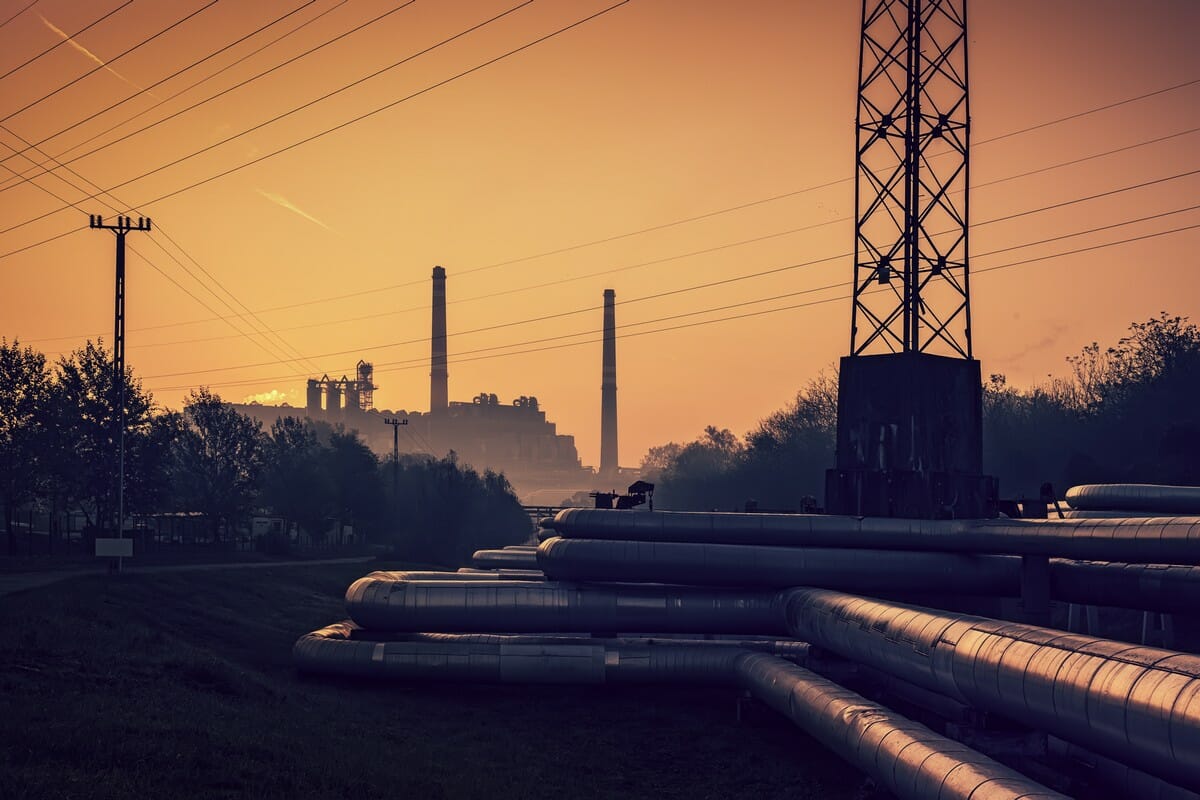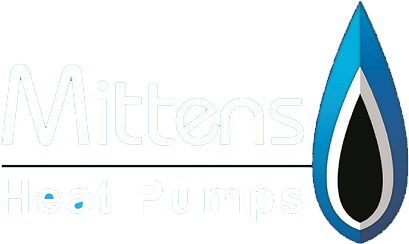District Heat Networks
Table of Contents
- 1 - How Does District Heating Work?
- 2 - Heat Production
- 3 - The Differences Between Community and District Heating
- 3.1 - Community Heating
- 3.2 - District Heating
- 3.3 - Heat Pump Type
- 3.4 - Heat Pumps and the Future of District Heating for the UK
- 3.5 - More Modern and Future-proofed
- 3.6 - Heat Pumps Offer Solutions to District Heating’s Shortcomings
- 3.7 - Beneits of Heat Pumps
- 3.8 - Heating a Whole Community
- 3.9 - We can Help you to Develop a Bespoke District Heating Solution
- 3.10 - District Heating as an Investment in the Future
- 3.11 - Expert Planning and Installation is as Important as the Heat Pumps you Choose
- 3.12 - District Heating Operation and Maintenance
District heating also known as heat networks or teleheating is a system for the distribution of heat generated in a centralised location by means of a network of insulated pipes to residential and commercial properties that have heating requirements such as water heating and space heating. District heating systems are a highly effective means of heating and cooling many buildings from a central plant in a given location.
They pump steam, hot water, and/or cold water to multiple buildings in an area such as a town centre, hospital or college campus, military base, or airport using a network of underground pipes. It requires less fuel to provide heating and cooling from a central plant and takes away the need to install separate heating and cooling systems in each building. District heating helps communities lower their operating costs and keep energy expenditure within the community by reducing the need to import heating and cooling fuel.

Our Guarantee
- Over Six Years Experience
- Unrivaled Experience
- An Exceptional Service
- Unbeatable Value For Money
- Industry-approved Scaffolders
- A Full Range of Heat Pumps Services
- Professional, Reliable and Diligent
- 100% Safety and Satisfaction
How Does District Heating Work?
A centralised system usually produces power in district heating, whether it is CHP, coal or in smaller facilities, oil or gas boilers. Older systems may heat water using a basic fossil fuel boiler(s), which will then be pumped throughout the area. This is effective and simple, and will result in fewer carbon emissions than individual boilers because of the centralised heat generation. Once enough heat is produced, it is then distributed along the defined route to the customers. This means that district heating works first by producing the heat, then transporting it to the appropriate properties.
We Are Also Available to Offer Heat Pumps Related Advice
Heat Production
During electricity generation, the centralised system takes the heat generated when the equipment is being cooled, which is then recycled and used to heat buildings. The big CHP boilers in district heating central stations are normally powered by fossil fuels but green alternatives such as biomass, solar thermal technologies, geothermal, and heat pump are becoming more popular. Modern district heating is all about cutting down waste by spreading the residual heat produced during the day, rather than only in peak morning and evening hours when demand is at its maximum.

Heat Transportation
Heat, usually in form of steam, is transmitted after generation through pipes, via substations, to individual buildings. Then heat interface units (HIUs) feed it through a network of insulated pipes to individual consumers, and heat storage units can be added to systems to further preserve the heat for use during peak demand periods.
This means that individual boilers, gas pipes and so on are eliminated in favour of a centralised plant where all the installation, maintenance and service work is performed. Overall, district heating is a great idea and at present around 210,000 households in the UK are connected to district heating networks.
Heat pumps are a great match for heat networks, and at The Mittens Heat Pumps UK we have what it takes to deliver heat in district heating networks and energy centres across the UK. For more information please call 01273 257407.
The Differences Between Community and District Heating
District heating and community heating are methods of delivering hot tap water and radiator heating that are environmentally friendly and energy-efficient. Heat generated at a central boiler plant is transmitted through pipes to several buildings. The heat can be provided by a very wide range of energy sources including natural gas, oil, biofuel or green energy. A successful energy company will be able to combine 6-8 heating sources and use them according to their priorities. District and community heating are trouble-free ways to obtain heat for the end user.
A district or community heating system’s heating sources are more convenient and efficient than small individual space heaters. However, while these two systems seem similar, there are some differences between the two.
Community Heating
A community or communal heating system supplies heat from a regular boiler or heat source to a limited number of dwellings. For example, it may consist of a system that heats a block of flats, or of a larger system that heats many buildings, but within a limited radius. This eliminates the need for individual boilers and a gas supply within each home.
District Heating
District heating on the other hand has greater potentials: to disperse large-scale heat sources over a wide city, and to link several buildings in a heat network. District heating is about spreading heat from a large-scale generation facility across a large area, typically within towns, and links community heating schemes. District heating involves installing large pipes in roads, connecting them to domestic and commercial properties within a wider area, a different technological dimension than community heating. District heating requires more step-up facilities in order to deliver heat and hot water to buildings that may not even be close to each other.
Heat Pump Type
Heat Pumps and the Future of District Heating for the UK
In many countries in Central and Northern Europe, the use of heat pumps (both air source and ground source) for hot water and heating household consumption is well-established, and in the UK, around 22,000 heat pumps were installed in 2017 alone, showing that the market for this sustainable energy is increasing.
Electric heat pumps with clean electricity are seen as viable technologies that could replace gas heating and contribute to the future low-carbon goal in the United Kingdom, particularly in the district heating sector, which has already been changing over the past few years in order to make better use of renewable energy resources. It is therefore safe to say that heat pumps are the future of district heating in the UK, and here’s why:
More Modern and Future-proofed
In certain types of buildings, heat pumps are the most effective solution to fossil-fuel heating. They have been around for decades and are much more effective than heaters with electric resistance, and can be used for both room heating and water heating.
Modern heat pumps, unlike older devices, can deliver heat instantly and operate with very little noise, making them far more attractive to consumers. You can also run heat pumps “in reverse”, allowing them to provide both cooling and heating.
As our homes become more energy efficient, with higher levels of airtightness and insulation, the risk of overheating in the summer increases, making the heat pumps’ air conditioning capabilities an important consideration for buildings that are future-proof.
Heat Pumps Offer Solutions to District Heating’s Shortcomings
With traditional district heating using a central gas boiler for heat production, the initial investment costs as well as the running costs tend to be quite on the high side. Running gas equipment for an indefinable amount of time is a costly undertaking, especially with the growing cost of gas in the country. This places the pressure on the end user (individual homes and offices), who end up paying for heat at high rates.
On the other hand, a very effective form of household heating, switching to heat pumps running on electricity will have a positive effect on both operating and end-user costs. The district heating system will become cheaper to run because electricity is inherently cheaper than gas. In addition, the equipment’s renewable nature means fewer carbon emissions.
Electrical heating is ultimately cheaper to install than gas, has little or no maintenance costs and lasts up to 50% longer than the typical gas boiler. It is also 100% efficient, meaning that all the electricity you pay for and use ends up getting converted into heat that you also use.
Heating a Whole Community
The heat pumps will do the job extremely efficiently when it comes to heating an entire district or community. Heat pumps consume much less energy than other heating types – producing 3kw of heat for every 1kw of electricity, three times the amount you get from electric heating. Additionally, modern heat pumps can heat water up to 90C instead of the usual 50C, meaning it can be used in both old and new buildings.
This means retrofitting homes that make use of gas boilers to operate heating systems becomes a realistic possibility, all managed from one central system with the end user investing in little or no additional equipment.

We can Help you to Develop a Bespoke District Heating Solution
If you are considering distributing heat via insulated pipes to a system of local buildings in towns, local businesses, housing developments or an even entire sustainable community, you are on the right page. At The Mittens Heat Pumps UK we have the expertise, resources, and qualifications to design a bespoke district heating system from the ground up.
Working with local authorities and developers, we’ll deliver a custom designed system that fits your requirements perfectly. Whatever your plans, we’ll provide you with a clear picture of what to expect. Request a call back today via our website.
District Heating as an Investment in the Future
The Mittens Heat Pumps UK’s district heating systems are a long-term investment which improves infrastructure and living standards for people and communities in cities and towns. District systems with long service life and low cost of installation will enable small towns and cities to show progress in the field of environmentally friendly and renewable energy.
If you invest in district heating, it is an investment that will yield returns far into the future, both financially and in terms of renewable energy goals. Request more information today.
We Are Also Available to Offer Heat Pumps Related Advice
Expert Planning and Installation is as Important as the Heat Pumps you Choose
Planning a district heating system is not easy. It takes a lot of expertise and information to develop the appropriate heating and cooling strategies. In fact, when it comes to district heating, expert planning and installation are as important as the equipment you choose for the heat pump. Therefore, it is important that you work with people who know what they are doing.
We at The Mittens Heat Pumps UK provide versatile, complete and customised solutions to customers for all phases of district heating and cooling projects. We carry out audits, initial route planning for district heating systems, assessments of energy needs, as well as economic evaluations. We analyse the risk level of the distribution system and put forward measures to improve operations and reduce possible failures in the heating generation and transportation.
We evaluate the needs of our customers and do everything from feasibility assessments to comprehensive planning and development management of the pipeline network and customer services, including providing advice on procedures for energy efficiency for those properties already linked to the district heating or cooling network.
Please call 01273 257407 to request more information about our district heating solutions.
District Heating Operation and Maintenance
The seamless operation of a district heating system means avoiding the installation of over-expensive heat pumps, improving plant load performance, increasing system redundancy for further expansion of the network and improving its capacity to ensure security of supply during severe heating seasons. This is why expert managers and administrators of district heating systems are needed.

Here at The Mittens Heat Pumps UK we help our customers overcome district heating problems by running their output facilities optimally. This allows our customers to channel their energies to the core aspect of running their business instead.
We take care of day-to-day operations and maintenance activities satisfactorily and efficiently. We have the most extensive industry competence for various types of heat pumps and district heating systems. We base our activities on the successful background of industrial development and the processes and procedures that we have optimised for effective operation and maintenance. We can help to improve the sustainability and energy efficiency of the district heating system so that there is little or no downtime.
If you’re planning a district or community heating project, we can help you plan, deploy and maintain it. To discuss your project more in-depth, please call 01273 257407 to speak to one of our experts today. We look forward to hearing more about your plans.
Get in Touch With us for Your Heat Pump Hire Quotes
